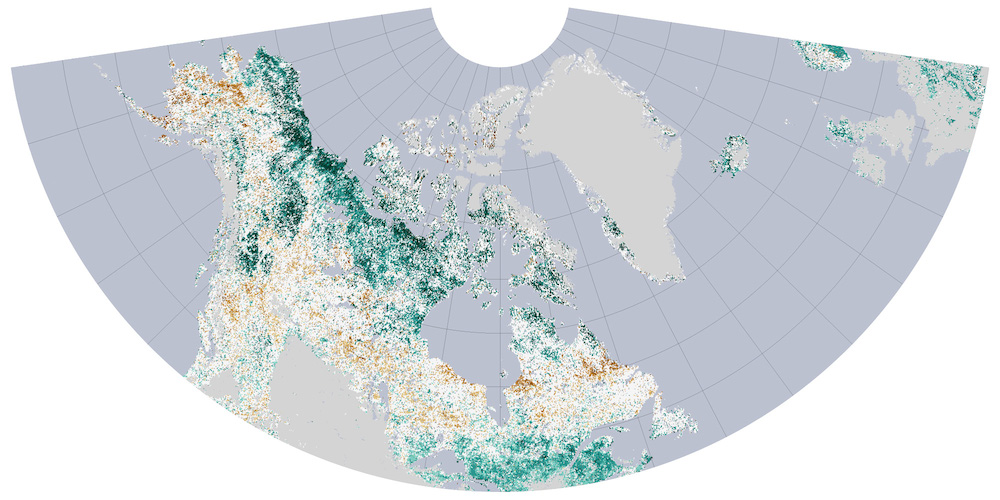
water equivalent and (b) Mean annual snow
cover duration changes from 1970-1999 to
2049-2060 (%) (SWIPA, 2011).
Future projections indicate that the Snow Water Equivalent (quantity of water within a snowpack) is expected to increase throughout this century up to 30% (Figure 1a) in the Canadian Arctic Archipelago, northeast Alaska and northern Scandinavia. Slight decreases are expected in southern regions and Europe. Additionally, snow cover duration is projected to decrease extensively across the Arctic (Figure 1b), especially in coastal regions. Snow cover duration is expected to decline the most in Alaska and Scandinavia of up to 40% (SWIPA, 2011). Moreover, surges in vegetation abundance may stimulate further snow cover depth and change snow pack structure. This vegetation progression would occur as a result of shorter snow cover duration and a longer summer growing season.
In early spring, with the onset of seasonal snowmelt, the typically dry ground surface is inundated with melting snow. This process mobilizes the biogeochemical processes within the soil. Additionally, the ground surface becomes exposed to atmospheric influences, having negative consequences on the soil structure. These negative results of snow freeze-thaw cycles are reduced in tundra ground surfaces in comparison to lower latitude regions. It is predicted that climate change will have significant effects on the biogeochemical processes associated with snow processes: nutrients will become more accessible, snow depth may increase and snow thaw will occur earlier each year. In conjunction with earlier thaw, vegetation changes are predicted to continue throughout the Arctic (Buckeridge, Cen, Layzell, & Grogan, 2009).
Within the last few decades, the Normalized Difference Vegetation Index acquired from NASA and NOAA satellite have seen a "greening of the Arctic", an increase in vegetation productivity by 7-10% (Figure 2). Vegetation cover native to southern regions is moving northward. Generally, an upsurge in vegetation productivity is occurring with few regions of reduced productivity. The most change is occurring in the northernmost regions of the circumpolar Arctic, where trees and tall shrubs are growing in former treeless tundra environments. However, droughts and forest fires are occurring at increased frequency in some Boreal forest regions, dampening the health of plant species. A full analysis of the "Arctic Greening" can be found in a Nature Climate Change Article by Xu et al. (NASA, 2011).

Material for this page was provided by Maren Pauly, Department of Geography, University of Waterloo.
